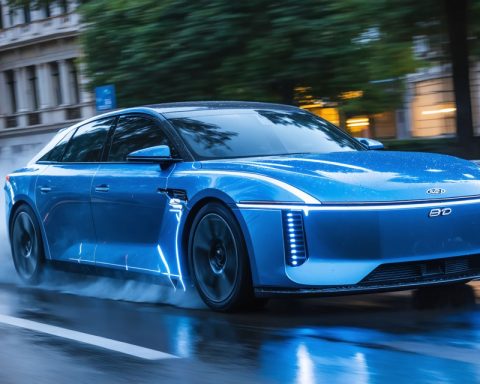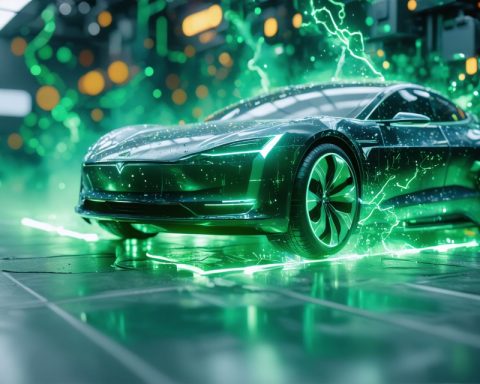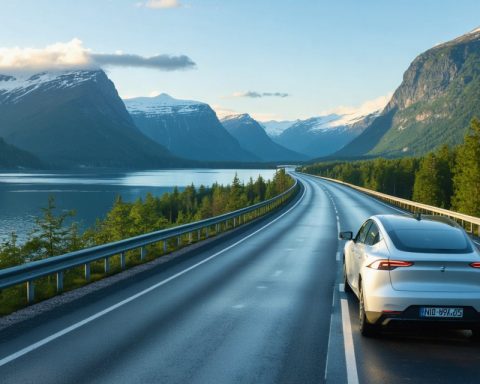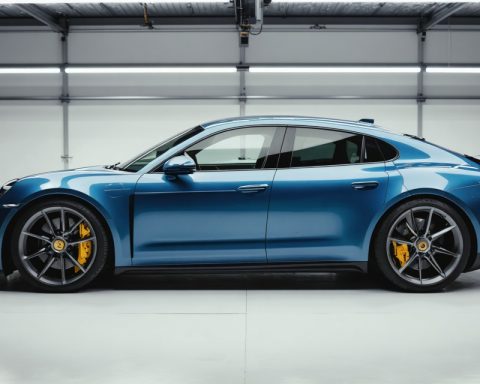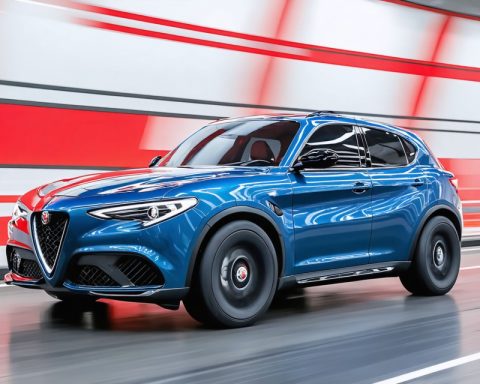- BYD is rapidly becoming a dominant force in the electric vehicle market, with a 58% increase in passenger vehicle deliveries in 2025.
- Known as the “Tesla Killer,” BYD is effectively capitalizing on its expert craftsmanship and deep understanding of the local Chinese market.
- BYD’s diverse model lineup, featuring advanced technology and appealing design, has resonated with consumers looking for sustainable options.
- In contrast, Tesla faces challenges in Europe due to political controversies involving Elon Musk and shifting consumer expectations.
- Analysts suggest Tesla’s brand allure may be waning, while BYD continues to capture consumer interest with pragmatic designs and competitive pricing.
- The automotive landscape is shifting towards electrification, with sustainability emerging as a fundamental element of future automotive success.
The streets of the future are increasingly dominated by a new powerhouse—BYD. With a relentless drive and eye for tomorrow, the Chinese electric vehicle maker, often heralded as the “Tesla Killer,” is forging an electrified path to supremacy. In the brisk months of 2025, BYD rocketed its way into car buyers’ hearts, delivering nearly a million passenger vehicles—a staggering 58% leap from the prior year. While Tesla, the emblem of electric innovation, contends with turbulent waters in Europe, BYD seems to be navigating an open highway of opportunity.
Within the electric skyline of China, BYD shines brightly, casting long shadows on competitors. With expert craftsmanship and a keen understanding of local markets, they have resonated with a thrust of new energy that Tesla finds challenging to match. The model lineup, ranging from dynamic sedans to robust SUVs, showcases a blend of advanced technology and styling that appeals to a diverse array of consumers eager to embrace a sustainable future.
Meanwhile, Tesla, once the undisputed ruler of electric innovation, encounters a robust storm—symbolic not just in its lackluster sales but a fissure in its foundational brand identity. Across Europe, a cacophony of discontent shadowed by Elon Musk’s political dalliances ripples through Tesla’s prime markets. The spectacle of dwindling numbers—especially pronounced in France, Sweden, Denmark, and the Netherlands—reflects a broader narrative of misalignment between Musk’s ventures and consumer expectations.
With Tesla predicting a modest dip in their quarterly figures, analysts and investors alike ponder whether these political entanglements have disrupted the brand’s allure. As consumers calibrate their priorities, the allure of BYD’s pragmatic designs and competitive pricing steals the spotlight, providing a comprehensive snapshot of the shifting landscape in automotive choice.
The world stands on the brink of an electric revolution, and amid this transformation, BYD emerges not just as a competitor but as a perceptive frontrunner. The decisive takeaway from this burgeoning saga is clear: adaptability, local understanding, and technology are the currencies of the new automotive economy. As we transition from combustion to electrification, one truth resonates—sustainability is no longer merely an option; it has become the default setting for automotive excellence.
Unveiling the Future of Electric Vehicles: BYD’s Rise and Tesla’s Challenges
The Rise of BYD in the Electric Vehicle Market
The Chinese electric vehicle manufacturer BYD has quickly ascended as a formidable force in the global automotive arena, often referred to as the “Tesla Killer.” This moniker underscores the company’s rapid growth and its potential to eclipse traditional industry leaders like Tesla. In 2025 alone, BYD delivered nearly a million passenger vehicles, marking a 58% increase from the previous year. Such astronomical growth in a highly competitive market is indicative of BYD’s solid strategy and execution.
Here, we’ll explore additional facts that enhance the understanding of BYD and Tesla’s positions within the electric vehicle (EV) industry, while also providing valuable insights into the evolving landscape.
Key Features and Innovations by BYD
1. Product Line Versatility:
BYD offers a diverse range of vehicles, from dynamic sedans to robust SUVs, each utilizing cutting-edge technology. Innovations such as BYD’s Blade Battery, which promises enhanced safety and a longer lifespan, underscore their technological prowess.
2. Competitive Pricing:
One of BYD’s strategic advantages is its ability to offer competitively priced vehicles, making electric cars more accessible to a broader consumer base without compromising on quality and features.
3. Sustainability Focus:
BYD puts a strong emphasis on sustainability, not just in the vehicles it manufactures but also in its production processes. They aim to create a comprehensive ecosystem for EVs that includes electric buses, trucks, and rechargeable batteries.
Tesla’s European Market Challenges
While Tesla has been a leader in innovation, it faces significant challenges in Europe, a key market. Several factors contribute to this:
1. Market Saturation and Competition:
In markets like France, Sweden, Denmark, and the Netherlands, an increase in local and international competitors presents a challenge for Tesla. Companies like BYD capitalize on their local market understanding and competitive pricing to capture Tesla’s market share.
2. Political Influences:
Elon Musk’s political affiliations and public statements have detracted from Tesla’s appeal in certain markets. This has led to a misalignment with consumer expectations, particularly in Europe where political climate is a sensitive issue.
3. Brand Identity Concerns:
Tesla’s brand image, once regarded as futuristic and innovative, has taken a hit due to these political entanglements. This perceived erosion of brand identity has consumers looking toward brands like BYD that communicate stability and focus on innovation.
Market Trends and Predictions
Growth in Electric Vehicle Adoption:
Globally, the EV market is projected to continue its rapid growth. By 2030, it’s expected that EVs will make up over 50% of all car sales, driven by increased environmental awareness and supportive government policies [source: International Energy Agency].
BYD’s Global Expansion:
BYD is planning to expand its presence beyond China, targeting Europe and other emerging markets. Strategic partnerships and localized manufacturing are anticipated to play vital roles in this expansion.
Pros and Cons Overview
BYD Pros:
– Diverse, innovative product lineup
– Competitive pricing strategy
– Strong focus on sustainability
BYD Cons:
– Brand recognition still developing outside China
– Limited infrastructure in new markets compared to established brands
Tesla Pros:
– Established brand recognition
– Advanced technological features
Tesla Cons:
– Pricing remains on the higher end
– Recent challenges with brand image
Actionable Recommendations for Car Buyers
1. Evaluate Your Needs: Consider what you prioritize — is it cutting-edge technology, sustainability, cost, or brand recognition? BYD offers affordability and sustainability, while Tesla provides advanced technological features.
2. Research Local Incentives: Check for governmental incentives for EVs, as these can significantly reduce purchase costs.
3. Long-Term Considerations: Think about the future of charging infrastructure in your area, as this could affect your convenience and efficiency of using an electric vehicle.
For more detailed insights into electric vehicles or to compare the latest market entrants, you can explore resources from industry leaders such as BYD or Tesla.
As the world moves towards an electric future, staying informed will empower consumers to make smarter, more sustainable choices.




